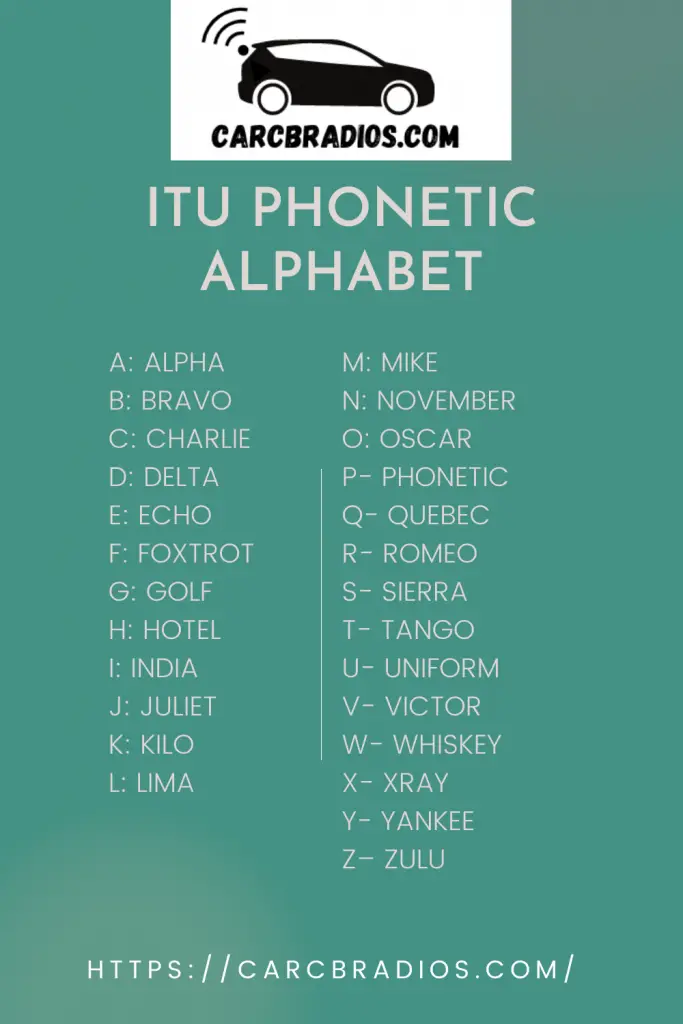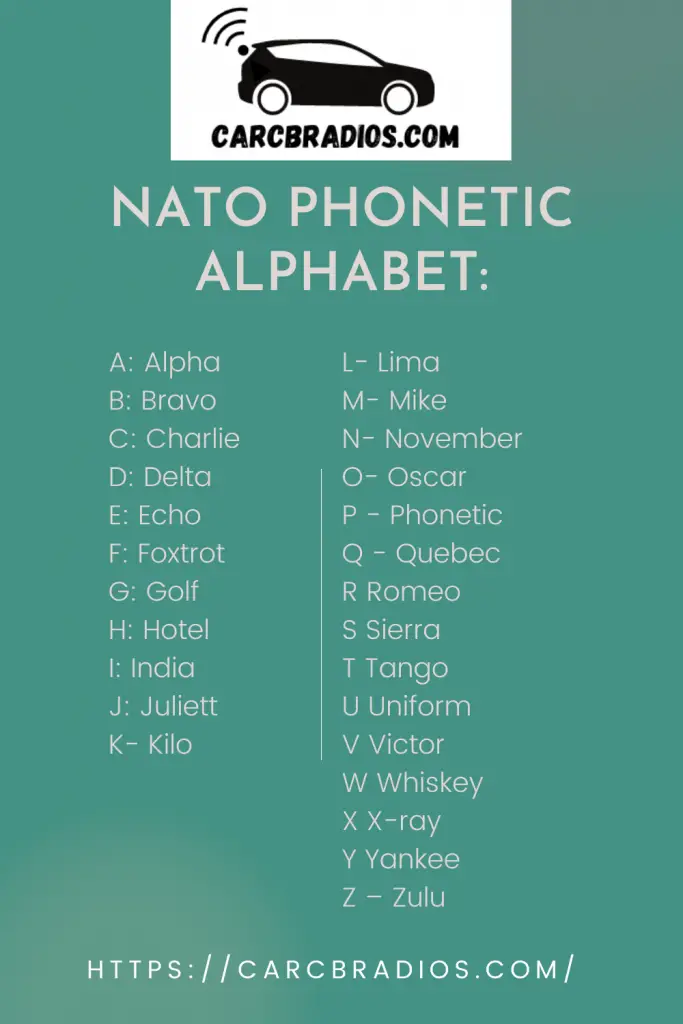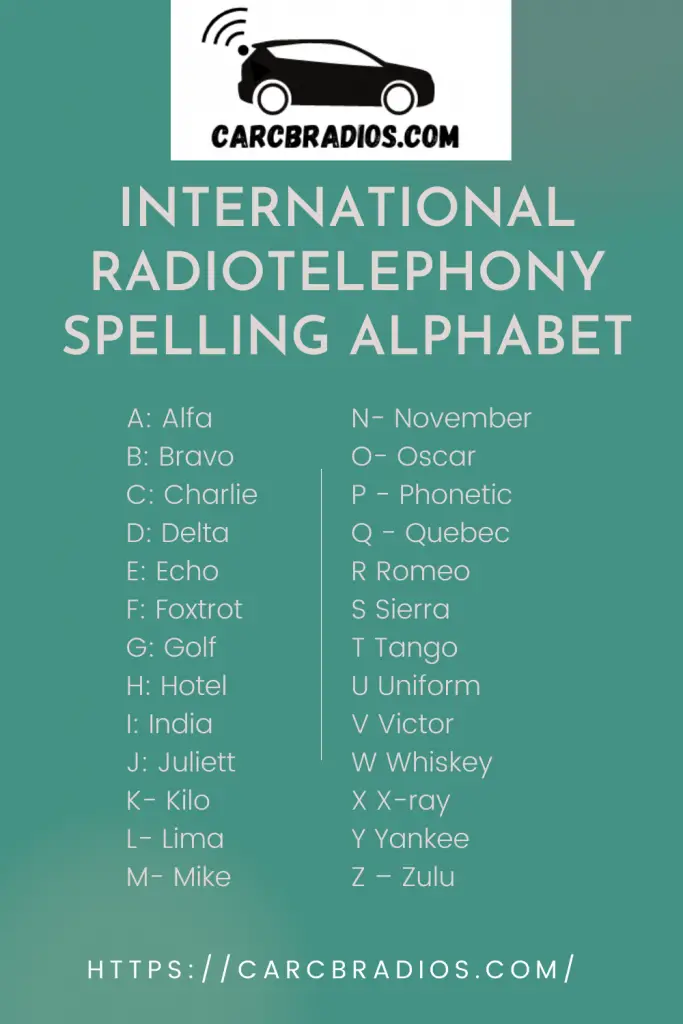By: Jeremy Neisser
What is ITU Phonetic Alphabet?
What is the purpose of ITU Phonetic Alphabet?
Who created it?
Why do we use the ITU Phonetic Alphabet nowadays?
The History of the Phoenetic Alphabet
ITU phonetic alphabet first appeared in 1913 as a set of six audio frequencies, however, the pronunciation was only based on the English language.
In 1955 first major revision took place and now there were 36 frequencies to produce clear comprehensible speech. At that time, ITU phonetic alphabet was used by telephone companies for international communications via satellite links.
In 1967 another major revision took place when it was decided that each frequency should represent only one unique sound while some letters were added and pronunciation of other letters was changed.
Since then the number of letters was increased up to 77 while some old phonemes became obsolete in the modern English language
Nowadays, although ITU phonetic alphabet is not needed in everyday life anymore it is frequently used in different scientific disciplines such as acoustics, computational linguistics, psycholinguistics etc.
Many books on Arabic numerals use the letter "H" instead of the digit "8", which makes the mistake detection and correction very easy.
The original ITU Phonetic Alphabet consisted of 36 symbols: 9 vowels and 27 consonants. To avoid any problems during the transmission, it was necessary to choose symbols that could be easily transmitted through telephone lines.
Each symbol corresponded to a unique sound in human speech so there were no letters for vowels such as "a", "e", "o" etc., instead, they were replaced by letters such as A, E, I, O, U, etc.
Between 1955 and 1967 several changes were made until we had 77 frequencies which stand for 30 unique sounds or phonemes (26 consonants and 4 vowels), 10 semivowels, and supplementary characters (digits 0-9, +, -).

ITU Phonetic Alphabet

ITU Phonetic Alphabet A- Z
A: ALPHA
B: BRAVO
C: CHARLIE
D: DELTA
E: ECHO
F: FOXTROT
G: GOLF
H: HOTEL
I: INDIA
J: JULIET
K: KILO
L: LIMA
M: MIKE
N: NOVEMBER
O: OSCAR
P- PHONETIC
Q- QUEBEC
R- ROMEO
S- SIERRA
T- TANGO
U- UNIFORM
V- VICTOR
W- WHISKEY
X- XRAY
Y- YANKEE
Z– ZULU
ITU Phonetic Alphabet rules
1) If the letter is denoting a vowel, then it should be pronounced as it is (A, E, I, O, U etc.).
2) There are 10 semivowels which are W for /w/, Y for /j/, H for /h/, R for /r/ and two T symbols. The first one stands for non-distinctive or neutral before the vowels A, E, U while the second one will be used before other vowels. This means that the pronunciation of Y can be heard as either I or U depending on its environment. This rule doesn't apply to L which is denoted by two letters but if you feel that pronunciation L is more like U, you can use the pronunciation of LI instead.
3) A letter G stands for /ɡ/ at the beginning of a word or syllable but it's pronounced as J in front of E, I, Y or when it follows within the same syllable.
4) The vowel A is usually pronounced as U (/ju:/), however, if there are two A symbols in a row with no vowel between them then they represent the sounds /eə/, e.g., TATA can be read as "TATU" or "TEAU".
5) Three letters stand for non-distinctive neutral sounds which are H for /h/, Q for /q/ and X for /ks/.
6) You can use the letter J instead of the first T to denote T, e.g., JTOO (jet).
7) When pronunciation of L is close to U, you can replace it with LI, however, this rule doesn't apply to initial or medial positions.
8) Vowel I can be pronounced as /ju:/ when it follows W (/w/), S (/s/), Y (/j/) or an unvoiced consonant (/k/, /f/, /t/, etc.), e.g., TWIX (twice), SIERRA (serious).
9) The letter X denotes either /z/ or /gz/. On other occasions, it's used for representing X-SAMPA phoneme, e.g., XHOSA (Zulu).
10) The letter Y is used for /j/ in front of E, I, or Y, otherwise it represents the sound /ɪ/, e.g., DTUBE (duty).
11) Two letters B and V denote both allophones of English phoneme /b/. When they are put together this represents the voiced plosive which is not present in English language (/ɡw/), e.g., TROBAN (trumpet). They can also be read as /p/, e.g., KARIBU (caribou).
12) One letter M stands for two different sounds depending on the environment. When it precedes a vowel, N or Y then it's pronounced as /m/, e.g., MITE (mite). In all other cases it represents nasal sound close to IPA phoneme /n/.
13) Two letters PH denote either voiceless bilabial plosive (/p/) or voiceless labiodental fricative (/f/), e.g., LAPHROAIG (whisky).
14) The letter F denotes both labio-dental and bilabial fricatives depending on the environment which are denoted by two respective symbols FH and FF, e.g., THLASTRF (the last laugh).
15) Phonemes /kw/ and /k/ are represented by letter KW, e.g., MISSIKATI (waterbuck).
16) The letter H is pronounced as velar fricative (/x/) in all cases except for when it's representing aspiration or a glottal stop, then it's pronounced as voiceless glottal fricative (/h/), e.g., AHUNABONA (I don't know).
17) Digits from zero to nine have their own pronunciation which is close to the English one but if there's no equivalent in English language then it should be read as zeroes, e.g., SHUMBA (escape).
18) A syllable containing a vowel with a diacritical tone mark should be pronounced as a lengthened vowel, e.g., TEOFILO (telephone).
19) Stress marks which come after a syllable mean that it is to be stressed, e.g., CHI-TE-FE (churchy).
20) In cases when pronunciation of two words are similar, only the first one will have the stress marked, e.g., FISH and DISH.
When was the Nato Phonetic Alphabet created?
The Nato Phonetic Alphabet was created in 1953.
What is the Nato Phonetic Alphabet used for?
The NATO phonetic alphabet is used when spelling out words over radios, telephone lines, etc. This ensures that there are no misunderstandings between units on the ground and units based at the front line which provides an extra layer of safety when soldiers are in harm's way.
The standardization provided by using one form of communication also makes it easier to provide clear instructions without confusion or mistakes being made due to miscommunication during an emergency situation.
Nato Phonetic Alphabet:

Nato Phonetic Alphabet: A- Z
A: Alpha
B: Bravo
C: Charlie
D: Delta
E: Echo
F: Foxtrot
G: Golf
H: Hotel
I: India
J: Juliett
K- Kilo
L- Lima
M- Mike
N- November
O- Oscar
P - Phonetic
Q - Quebec
R Romeo
S Sierra
T Tango
U Uniform
V Victor
W Whiskey
X X-ray
Y Yankee
Z – Zulu
You may like:
International Radiotelephony Spelling Alphabet
The International Radiotelephony Spelling Alphabet was created in 1927.
What is the International Radiotelephony Spelling Alphabet used for?
The international radiotelephony spelling alphabet is used when spelling out words over radio waves to ensure there are no misunderstandings between units on the ground and units based at a front line which provides an extra layer of safety when soldiers are exposed to harm's way.
The standardization provided by using one form of communication also makes it easier to provide clear instructions without confusion or mistakes being made due to miscommunication during an emergency situation.

International Radiotelephony Spelling Alphabet: A- Z
A: Alfa
B: Bravo
C: Charlie
D: Delta
E: Echo
F: Foxtrot
G: Golf
H: Hotel
I: India
J: Juliett
K- Kilo
L- Lima
M- Mike
N- November
O- Oscar
P - Phonetic
Q - Quebec
R Romeo
S Sierra
T Tango
U Uniform
V Victor
W Whiskey
X X-ray
Y Yankee
Z – Zulu
Spelling Phoenetic Alphabet (English according to International Civil Aviation Organization (ICAO)
The International Civil Aviation Organization (ICAO) Phonetic Alphabet was created in 1927 and is used when spelling out words over radio waves to ensure there are no misunderstandings between units on the ground and units based at a front line which provides an extra layer of safety when soldiers are exposed to harm's way.
The standardization provided by using one form of communication also makes it easier to provide clear instructions without confusion or mistakes being made due to miscommunication during an emergency situation.

Spelling Phoenetic Alphabet : A- Z
A : ALFA
B : BRAVO
C : CHARLIE
D : DELTA
E : ECHO
F : FOXTROT
G : GOLF
H : HOTEL
I : INDIA
J : JULIET
K: KILO
L: LIMA
M: MIKE
N: NOVEMBER
O: OSCAR
P : PHONETIC
Q:- QUEBEC
R: ROMEO
S: SIERRA
T: TANGO
U : UNIFORM
V : VICTOR
W - WHISKEY
X:- X-RAY
Y YANKEE
Z – ZULU

Hi & Welcome!
My name is Jeremy and I have been an avid car nut for many year. My first car was an 1987 Honda CRX. I put in my first Kenwood stereo, amp, 2 10" JLs and a CB Radio in it and have been an avid user of CBs and car radios for years. I'll do my best to share my tips, information and thoughts to help you with whatever question you might have, ABOUT ME
After I graduated from High School, I worked 5 years are Radio Shack and 3 years at Circuit City answering questions and helping customers with various electronics questions.


